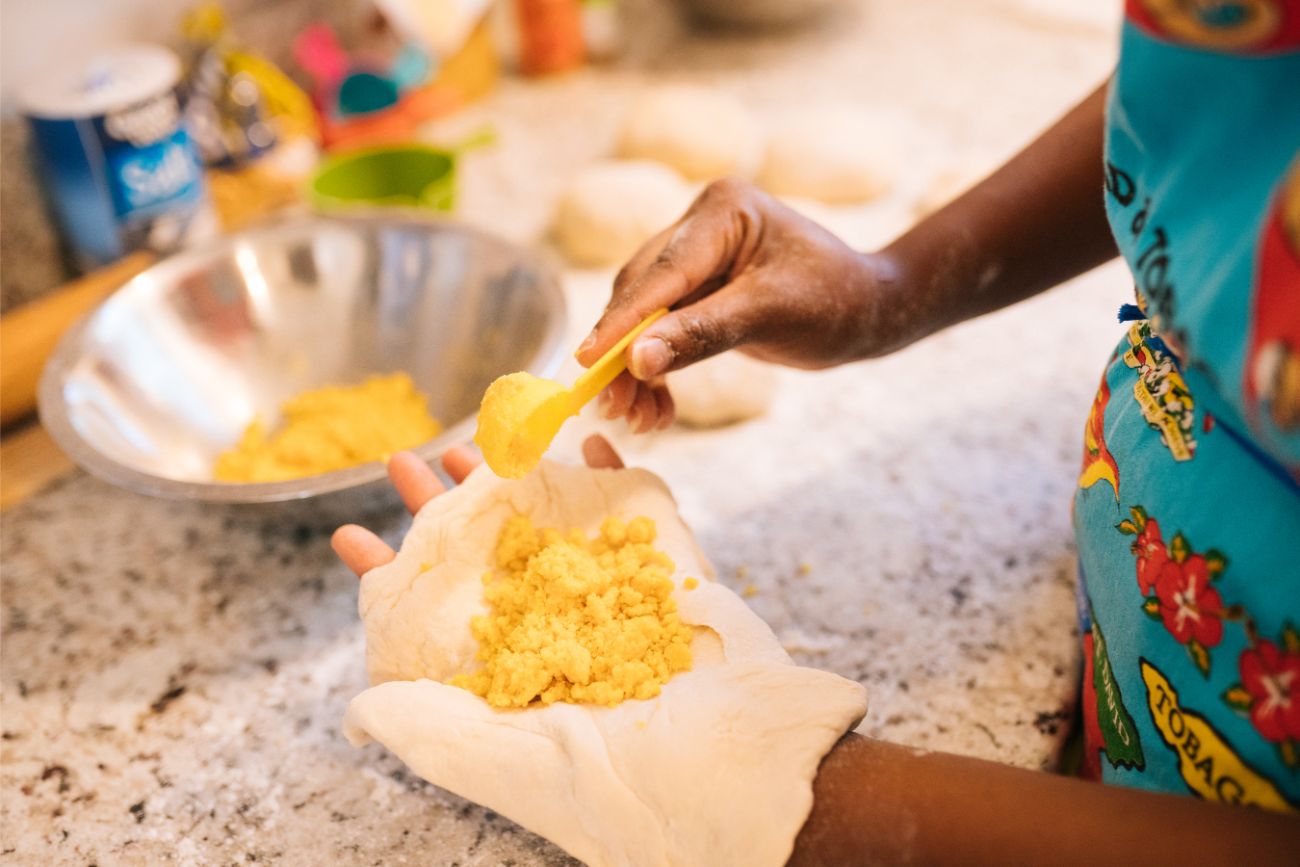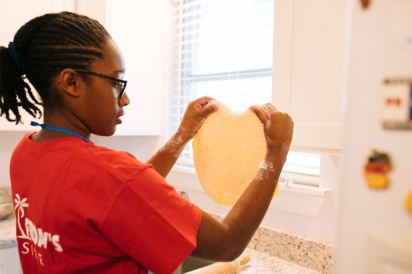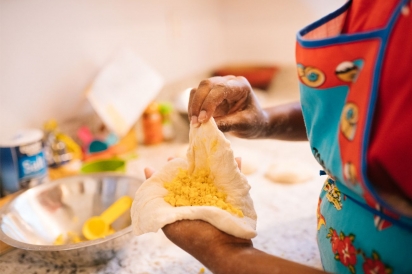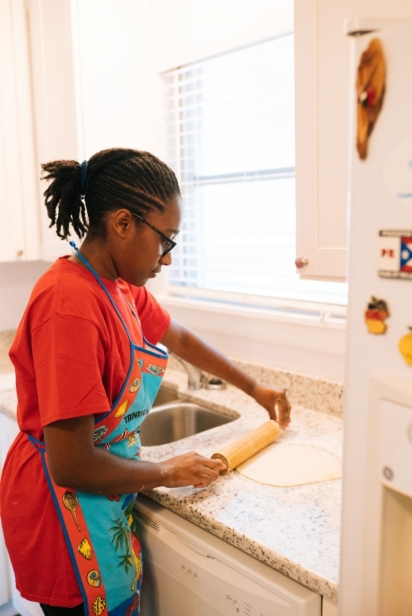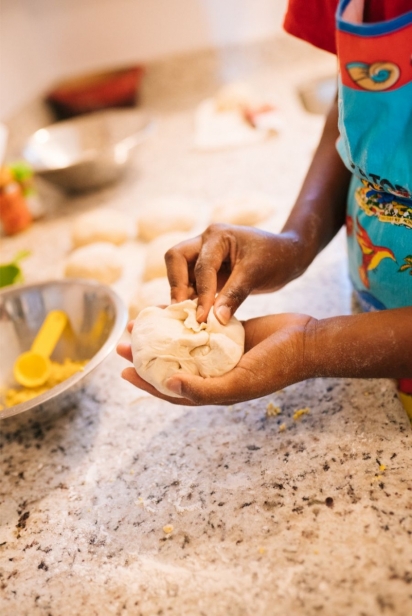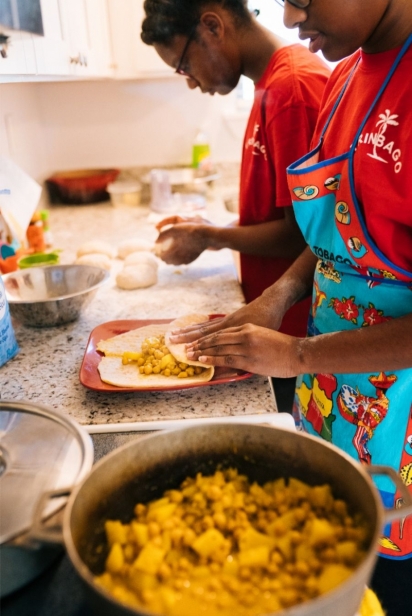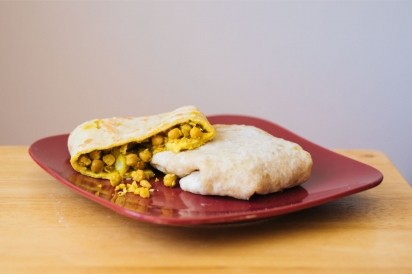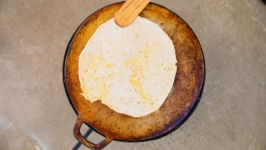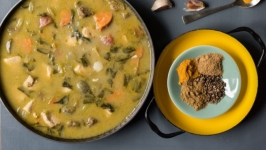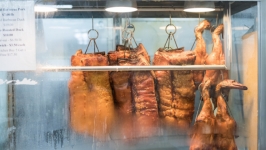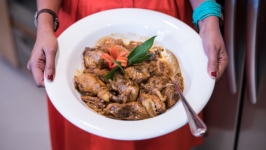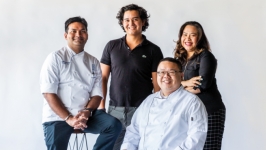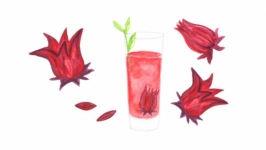Roti, The Tortilla of the Caribbean
When I was in first grade I discovered the “Cultures of the World” section at my library, and ever since I have been curious about other places and people beyond my daily life. Fortunately, having a mom from Trinidad has provided me opportunities to broaden my horizons beyond my hometown of Jacksonville.
Trinidad, known as the “rainbow island” of the Caribbean, has a diverse population based on its history of settlers originating from Britain, France, Africa, India, China and elsewhere. A visit to this small island is truly a cross-cultural experience. And the best way to get a taste of these co-existing cultures is by sampling the island’s food.
Roti is one example of the cross-cultural influences on food in Trinidad. An unleavened flatbread customarily cooked quickly on a high heat flat-iron griddle called a tawa, roti is meant to be used as an edible utensil for curried meat and vegetables. Many trace the origins of roti to India. Perhaps it should not come as a surprise to learn of roti’s place in Trinidadian cuisine, since it has become a staple around the world, eaten in parts of Asia, Africa, India as well as the Caribbean.
Trinidad has many variations of roti skins (a colloquial term for the flatbread itself). The most popular version is called dhalpuri and is mainly used in wrapped roti, a popular street food. Ground split peas, cumin and other seasonings are mixed into the dhalpuri dough before grilling. Wrapped roti has become one of the classic displays of Trinidadian culture. Originally an innovative hybrid of Indian and Caribbean cultures, wrapped roti is designed for easy consumption of a hearty curry for the average laborer. Today, Trinidadians fashion this hand-held food similar to a burrito, using ingredients that are more common to the island’s culinary history: chickpeas, potatoes, meat or vegetable curry, mango chutney. Add your desired amount of pepper (hot) sauce. Fold the skin around your curry. And voilà: your own Trinidadian wrapped roti!
Hunting for wrapped roti in America has given me an opportunity to connect to my culture and experience the cultures of others. It’s hard to find an authentic-tasting wrapped roti in the U.S., especially in Florida. So I’ve learned to make it myself, with the guidance of my grandma back in Trinidad. Though it does take practice to construct a perfect roti, the ingredients are easy to obtain and the flavor is unmatched. While travel is not always possible, food will constantly be an avenue for broadening one’s connection to the world.
This story was selected from submissions by students in Kelby Siddons' Advanced Placement Language and Composition classes at Episcopal School of Jacksonville.


